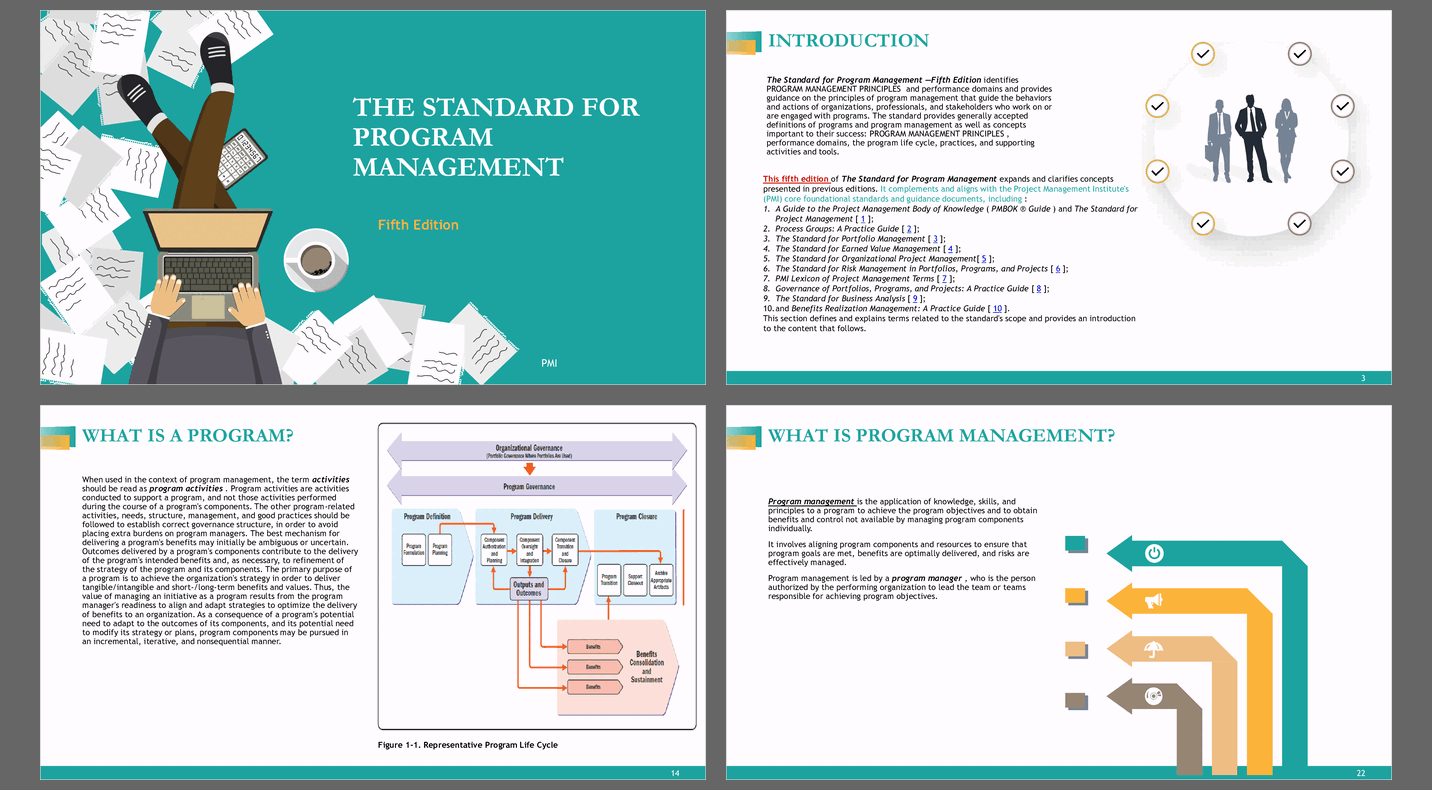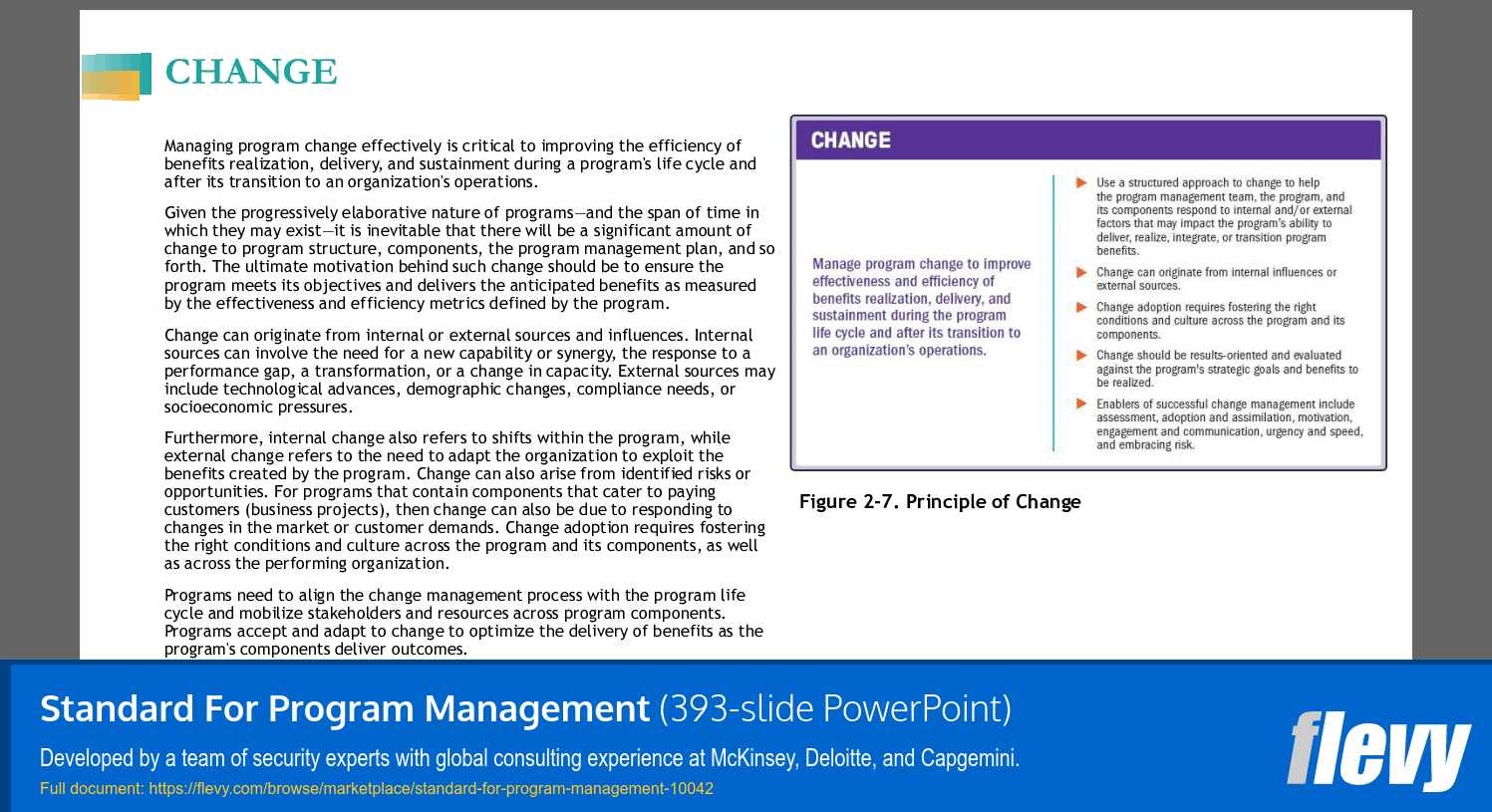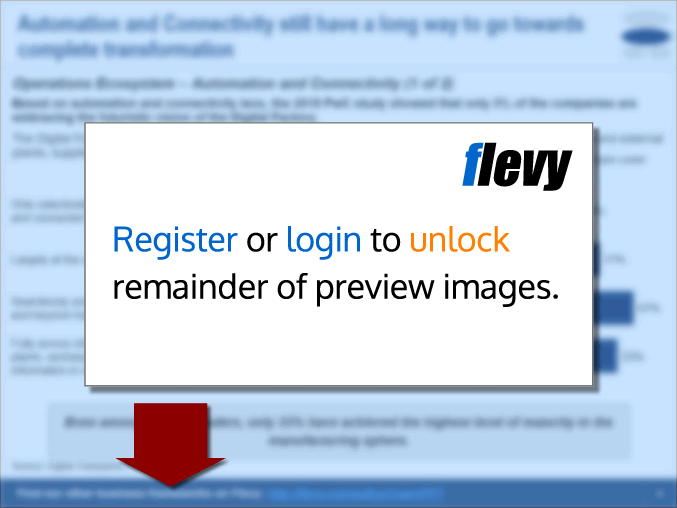Standard for Program Management (PowerPoint PPTX Slide Deck)
PowerPoint (PPTX) 393 Slides
PROJECT MANAGEMENT PPT DESCRIPTION
The Standard for Program Management—Fifth Edition establishes a comprehensive and authoritative framework for managing complex initiatives, moving beyond the guidance for individual projects to address the challenges of coordinating multiple, interrelated projects. Its core purpose is to define the principles, domains, and concepts that govern successful program management, thereby shaping the behaviors and actions of the entire organizational ecosystem involved, from executives and managers to team members and stakeholders.
Central to this edition are the Program Management Principles. These are foundational, value-based tenets that guide the judgment and conduct of program managers and their organizations. They serve as a moral and strategic compass, ensuring that program management is exercised with stewardship, integrity, and a focus on strategic alignment, rather than being merely a mechanical application of processes. Complementing these principles are the Program Performance Domains. These are interconnected areas of activity that collectively define the work of program management. Unlike a sequential process, these domains—such as stakeholder engagement, benefits realization, and governance—are areas of focus that interact continuously throughout a program's life, requiring a holistic and adaptive management approach.
The standard provides crucial, universally accepted definitions that create a common language for the profession. It clearly distinguishes a "program" as a group of related projects managed in a coordinated way to obtain benefits not available from managing them individually, and "program management" as the application of knowledge and resources to achieve the program's objectives. This clarity is essential for effective communication and expectation management across complex organizations.
A significant feature of this fifth edition is its deliberate expansion and refinement of these concepts, offering greater detail and clarity to practitioners. Furthermore, it is designed not to exist in a vacuum but to be part of a cohesive body of knowledge. It is carefully aligned with other core Project Management Institute (PMI) standards, creating a unified and consistent framework for organizational project management. This alignment is evident in its synergy with foundational documents like *A Guide to the Project Management Body of Knowledge (PMBOK® Guide)*, which focuses on project-level delivery, and *The Standard for Portfolio Management*, which operates at the strategic level of selecting the right initiatives. It also integrates with specialized guides on risk, benefits realization, business analysis, and governance, ensuring that program management is presented as an integrated discipline that connects strategic goals to tangible outcomes through disciplined, coordinated, and principled execution.
Got a question about the product? Email us at support@flevy.com or ask the author directly by using the "Ask the Author a Question" form. If you cannot view the preview above this document description, go here to view the large preview instead.
Source: Best Practices in Project Management PowerPoint Slides: Standard for Program Management PowerPoint (PPTX) Presentation Slide Deck, RadVector Consulting









